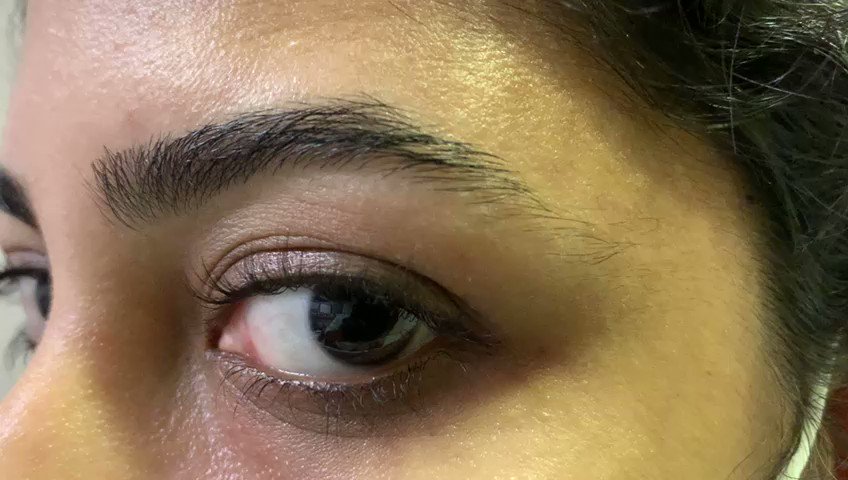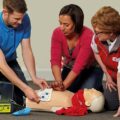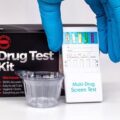According to the American Optometric Association nystagmus is a vision condition in which the eyes make repetitive, uncontrolled movements. These movements often result in reduced vision and depth perception and can affect balance and coordination. These involuntary eye movements can occur from side to side, up and down, or in a circular pattern. As a result, both eyes are unable to steadily view objects.
The history of nystagmus testing dates back to the early 1900s when physicians first began to study eye movements and their relationship to various neurological conditions. In 1906, a French neurologist named Henri Charles Jules Guillaume described a condition called “nystagmus,” which he defined as an involuntary, oscillatory movement of the eyes.
People with nystagmus might nod and hold their heads in unusual positions to compensate for the condition. Generally, nystagmus is a symptom of another eye or medical problem. Fatigue and stress can make nystagmus worse.
What is a Nystagmus test?
The nystagmus test is a medical evaluation used to assess a person’s eye movements.
There are 4 common types of nystagmus tests, including:
- Visual Inspection: A doctor may observe the patient’s eyes as they move in different directions, looking for any signs of nystagmus.
- Frenzel goggles: The patient wears goggles that magnify their eyes and blocks out external light. This allows the doctor to observe the eye movements more clearly.
- Electronystagmography (ENG): A test where electrodes are placed around the patient’s eyes to record eye movements while they watch moving visual stimuli or are subjected to different head positions.
- Videonystagmography (VNG): A test that uses video technology to record the patient’s eye movements as they watch moving visual stimuli or are subjected to different head positions.
These tests can help diagnose the underlying cause of nystagmus, which can range from neurological conditions to inner ear problems. Treatment depends on the underlying cause of nystagmus.
Horizontal Gaze Nystagmus (HGN)
The Horizontal Gaze Nystagmus (HGN) test a type of nystagmus test that is often used by law enforcement officers as a field sobriety test to detect alcohol impairment. The test was developed in the 1980s, by the National Highway Traffic Safety Administration (NHTSA) and has since become a widely used field sobriety test for detecting alcohol impairment.
This test involves the officer moving a pen or finger horizontally in front of the person’s face, while asking them to follow the object with their eyes, without moving their head.
Alcohol consumption can cause nystagmus, which can be more pronounced when a person is under the influence of alcohol. The HGN test is designed to detect this type of nystagmus, which can be a sign of alcohol impairment.
During the test, the officer will look for three types of nystagmus:
- Lack of Smooth Pursuit: The inability of the eyes to smoothly track a moving object.
- Distinct and Sustained Nystagmus at Maximum Deviation: The nystagmus becomes more pronounced when the eye is looking as far to the side as possible.
- Onset of Nystagmus Prior to 45 Degrees: The nystagmus begins before the eye moves 45 degrees to the side.
If the officer observes any of these signs of nystagmus, it can be an indication that the person has been drinking alcohol and may be impaired. However, it’s important to note that there are other factors that can cause nystagmus, such as certain medications or medical conditions, so the HGN test should be used in conjunction with other sobriety tests and observations to determine if a person is impaired.

Can you beat a horizontal gaze nystagmus test?
Learning how to beat the horizontal gaze nystagmus test is most often a waste of time because three clues are usually assessed during this test namely lack of smooth pursuit, distinct nystagmus at maximum deviation, and finally the onset of nystagmus prior to 45 degrees.
Alcohol can hit you pretty fast. It typically reaches your brain within 5 minutes, and you can begin feeling the effects within 10 minutes. When the concentration of alcohol begins to increase in your bloodstream, you’ll start to feel good. You might feel happy, more social and confident, and less inhibited. This is because alcohol stimulates the release of dopamine and serotonin, which are rightfully referred to as your “feel good” hormones.
As you get drunker, you’ll start to experience more physical symptoms. This happens because alcohol depresses your central nervous system and interferes with your brain’s communication pathways, which affects how your brain processes information.
The horizontal gaze nystagmus test is about 77% accurate as a field sobriety tool for detecting alcohol impairment because there are many factors that can affect a person’s performance on the test, including fatigue, illness, and certain medical conditions.
However, there are several documented cases where the test failed to detect alcohol impairment. In addition, the test could also fail if you already suffer from a natural nystagmus in your eyes.
If you are pulled over by a law enforcement officer and asked to perform a field sobriety test, it’s generally best to cooperate and follow the officer’s instructions. However, if you believe that you have been unfairly accused of driving under the influence, it’s important to contact a lawyer as soon as possible to protect your rights.






